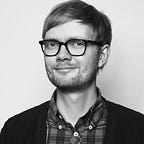Manifesto for the Inclusive Digital City — with design examples
Digital Urban Living is an interdisciplinary research project based at the Oslo School of Architecture and Design (AHO). The project brings together interaction design, urbanism and architecture, and addresses how digital technologies can enable new ways of designing urban services that positively affect issues of sustainability, urban life and governance. This Autumn, the Digital Urban Living research group have had the privilege to work with six master students of interaction- and service-design at AHO — Helene, Frida, Aleksandra, Andreea, Alice and Julie. Their brief was to openly explore, through design, the possibilities and the threats of digital cities within the Nordic model. They have developed a ‘Manifesto for the Inclusive Digital City — with design examples’ that was lanched on Friday the 14th of December. This post is a reworked version of my afterword for this manifesto.
Over the last 10 years we have witnessed an increasing, if yet under-defined, digitalisation of cities and urban societies. The technology-optimistic notion of the ‘Smart City’ as the solution for sustainable urban development have become a global paradigm. This proposed ‘smart’ urban future comes out of a technology-deterministic thinking that brings with it a mindset that sees the city as a problem that can be quantified, controllable and optimised. The ‘smart city’ mindset is promoted by global industries that are geared towards delivering logistics and control-systems, or discrete digital urban services that cater to individual, and often privileged, desires and needs. Global and digitally based urban actors (such as Airbnb, Uber or Google) have great impact on urban life and local environments, but are often outside urban regulations and local policies. They deliver self-contained services that are designed for specific users and use cases, but also have big implications for urban development, societal planning and possibilities for digital urban design.
As researchers, designers and citizens in the Nordics, we are alarmed by these developments. Traditionally, Nordic urban and societal design and planning have been centred on long-term, holistic and integral thinking grounded in the values and practices of the Nordic model. The Nordic model describes a particular kind of social and cultural traditions that form the basis of Nordic society, including: Equality between genders and classes; A high degree of trust between citizens and institutions; A strong, social welfare state and access to public services; Collective agreements around working conditions; Collective ownership of resources; Collective rights and responsibilities as citizens; and the goal of an inclusive, supportive society for all.
We argue that the approaches and mindsets of the dominant, global technology actors of the smart city are threatening the principles of the Nordic model. It seems that even if ‘smart cities’ and ‘smart governance’ are hot topics in urban policy and administration, critical thinking directed towards the evolving regime of the ‘digital city’ is underdeveloped both in design, urban planning and politics. Today challenges are being overlooked, and the democratic and inclusive possibilities of the digital city are not being pursued.
We therefore argue that a first step should be to address the digitalisation of cities and societies as a debate about societal values, culture and democracy. Instead of adopting the dominant arguments and practices of the global, often Silicon Valley-based digital industry, we should instead develop a Nordic model for the digitalisation of cities and societies. A Nordic model for digitalisation should both reflect, develop and protect the democratic and societal potential of this model, while also exploring how digital technologies and services can contribute.
With this challenge as their starting point, the interaction- and service-design students Helene, Frida, Julie, Aleksandra, Andreea, Alice and Julie have spent the last 5 months exploring, and designing for, inclusivity, collective experices and equity in digital cities. Through their project ‘Manifesto for the Inclusive Digital City’, these students have shown the importance, and need, of new arguments, new languages, and new design examples for addressing the digital city. They have identified, and argued for the overlooked potential of using digitalisation and design to aid in the development of social sustainability. Importantly, the Manifesto highlights the need for shifting the discussion of digital cites away from technology, and towards an open and more inclusive discourse about cultural and societal values.
The Manifesto highlights the need for shifting the discussion of digital cities away from technology, and towards an open and more inclusive discourse about cultural and societal values
The ‘Manifesto for the Inclusive Digital City’ is a valuable contribution to a growing body of research and critique that addresses the need for developing an interdisciplinary, political discourse that scrutinises the digitalisation of cities and societies on a more fundamental level, for example, through informed discussions about power relations that underpin much of digital urban life, including critical digital infrastructure, the power coded into software, issues of privacy, exclusion and control, and importantly, issues of design. This interdisciplinary discourse of social and cultural technology critique and development needs many voices, and with this Manifesto, Helene, Frida, Aleksandra, Andreea, Alice and Julie show how designers can broaden the future horizon of the Nordic digital city.
